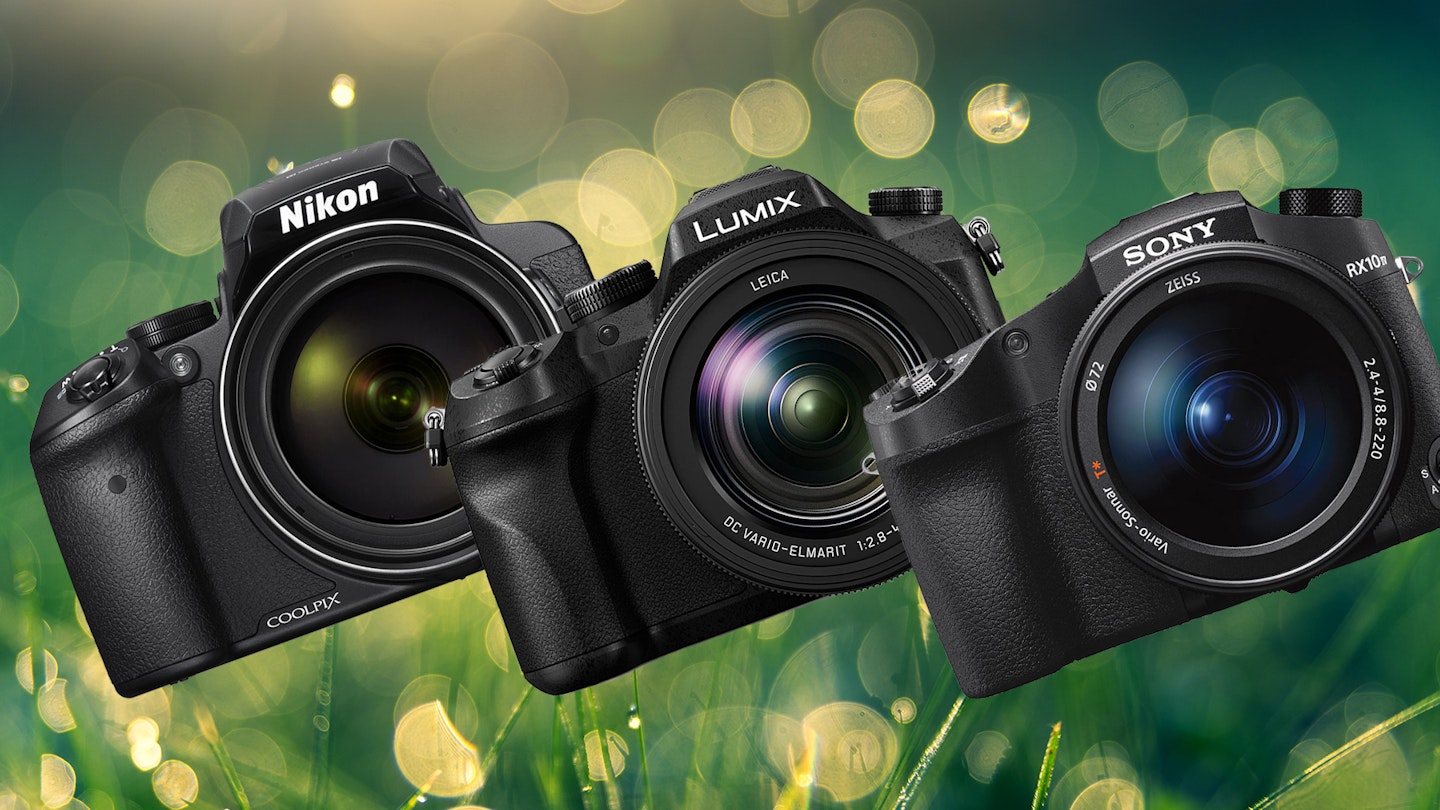One common term you’ll hear around photographers is ‘zoom with your feet’. It relates to using prime lenses, and having to effectively move yourself if you want to get closer to the object you’re shooting. However, in the case of bridge cameras – or as they’re sometimes known, superzooms – this is never an issue. With our longest focal length clocking in at a frankly obscene 35mm equivalent 2000mm, these great cameras are able to shoot the moon without leaving your seat – just crack open the window.
This optical marvel brings obvious strengths, such as being able to capture subjects at great distances, and cutting costs on otherwise expensive lenses, however, they all feature smaller sensors than DSLRs. The Panasonic and Sony feature a 1in CMOS sensor, though the Nikon features a 1/2.3in sensor, which is the same size as a smartphone.
Also, in the case of the Nikon, you can’t shoot RAW images, only JPEGs. This doesn’t mean you can’t get amazing results, but areas such as low-light performance won’t match APS-C or full-frame cameras.
Best bridge cameras 2021
1.
Sony RX10 IV
Description
Packs in a 20.1MP 1in CMOS sensor, 315-point phase detection AF system and astounding 24fps burst mode
Like the changes of the seasons, Sony’s excellence is becoming an unstoppable phenomenon. A large part of this is the company’s excellent sensor technology, and that includes this 1in marvel.
It packs in a 20.1MP 1in CMOS sensor, 315-point phase detection AF system, capable of a blistering 0.03sec focusing speed, and astounding 24fps continuous shooting speed.
The lens is very high quality, sporting a Zeiss Vario-Sonnar T design. It offers 24-600mm f/2.4-4, 35mm equivalent, and is impressively wide, though not a patch on the length offered by Nikon’s entry.
The ISO ranges from 100-12,800, which allows for low-light shooting. Though it’s not quite up to the same standards as larger sensors, it does do a great job. You also have 4K video, as well as a 40x slow motion feature, which shoots at 1000fps. The image quality isn’t as crisp as normal video, but it’s a spectacle to behold. If it were only a tad cheaper, it would definitely be our number one.
Pros
Super slow motion
In-body IS
24fps burst shooting speed
Cons
Expensive
Feels bulky
Heavy body
Spec
Weight: 1095g
WxHxD: 133x94x145mm
Battery: 420 shots
Card type: SD, SDXC, SDHC
AF: 315-point phase detection
Description
Panasonicu2019s latest bridge camera draws on the companyu2019s impressive heritage in this area
Panasonic’s latest bridge camera, the FZ2000, draws on the company’s impressive heritage in this area. You have a 24-480mm f/2.8-4.5 equivalent Leica Vario-Elmarit zoom, which is longer than the previous FZ1000’s, though still the shortest in test.
Panasonic has included a wealth of features, such as the company’s popular 4K Photo modes, including Burst and Focus Stacking, as well as 5-axis image stabilisation and 49-point DFD (Depth from Defocus) contrast detection AF. The focus is very quick in good light, though it lacks the sheer number of AF points of the Sony. It also tops out at 8fps continuous shooting speed, which is still very respectable.
You’re able to shoot in RAW here, which means you can capture more information, perfect for editing. You also have the ability to shoot in high-quality 4K video at 24fps, which is also offered by the Sony RX10 IV.
The 3in rotating 1040k-dot LCD touchscreen works perfectly, and there is also an EVF, which allows you to compose or review your shots in bright sunlight.
Find out more at the Panasonic website.
Pros
ND filter is a nice touch
Fast focusing
Image stabilisation
Cons
Shorter lens
Less AF points
Pricey
Spec
Weight: 966g
WxHxD: 138x102x135mm
Battery: 350 shots
Card type: SD, SDXC, SDHC
AF: 49-point contrast detect
Description
This superzoom bridge camera from Nikon is ideal if youu2019re on a budget.
This superzoom bridge camera from Nikon is ideal if you’re on a budget. Though its 1/2.3in sensor may not provide the best image quality in class, its 83x optical zoom lens gives you a 35mm equivalent focal length of 24-2000mm with a variable aperture of f/2.8-6.5. You can even double this to 4000mm with the Dynamic Fine Zoom feature, though this will affect image quality.
Under the hood, there’s a 1/2.3in CMOS sensor with 16MP resolution, contrast detection autofocus system and 5-axis optical image stabilisation – a must when shooting at 2000mm. The P900 supports manual shooting, which is great when you need to input your settings, though it doesn’t support RAW files. The EVF is very handy for composing your shots, especially in bright daylight, and the 3in 921k-dot rear screen is perfect for reviewing your images to make sure you’ve nailed the shot.
Although the autofocus isn’t the best in class, you can select the handy Moon or Bird-watching modes to make it easier to capture those stunning images.
Uh oh! This is currently unavailable. However, you can add it to your list and Amazon will notify you if it comes back in stock.
Pros
Battery life
Huge zoom range
Image stabilisation
Cons
Aperture range
Small sensor
Bulky
Spec
Weight: 899g
WxHxD: 140x103x137mm
Battery: 360 shots
Card type: SD, SDXC, SDHC
AF: 99 points
Flash: Yes
Video: 1080p
What to read next:
Kirk Schwarz is a tech-addicted photographer with over a decade's experience; Kirk’s used to putting new gear through extreme field testing. He's previously written for Practical Photography.
Subscribe to the What’s The Best Newsletter to keep up to date with more of the latest reviews and recommendations from the What’s The Best team.



